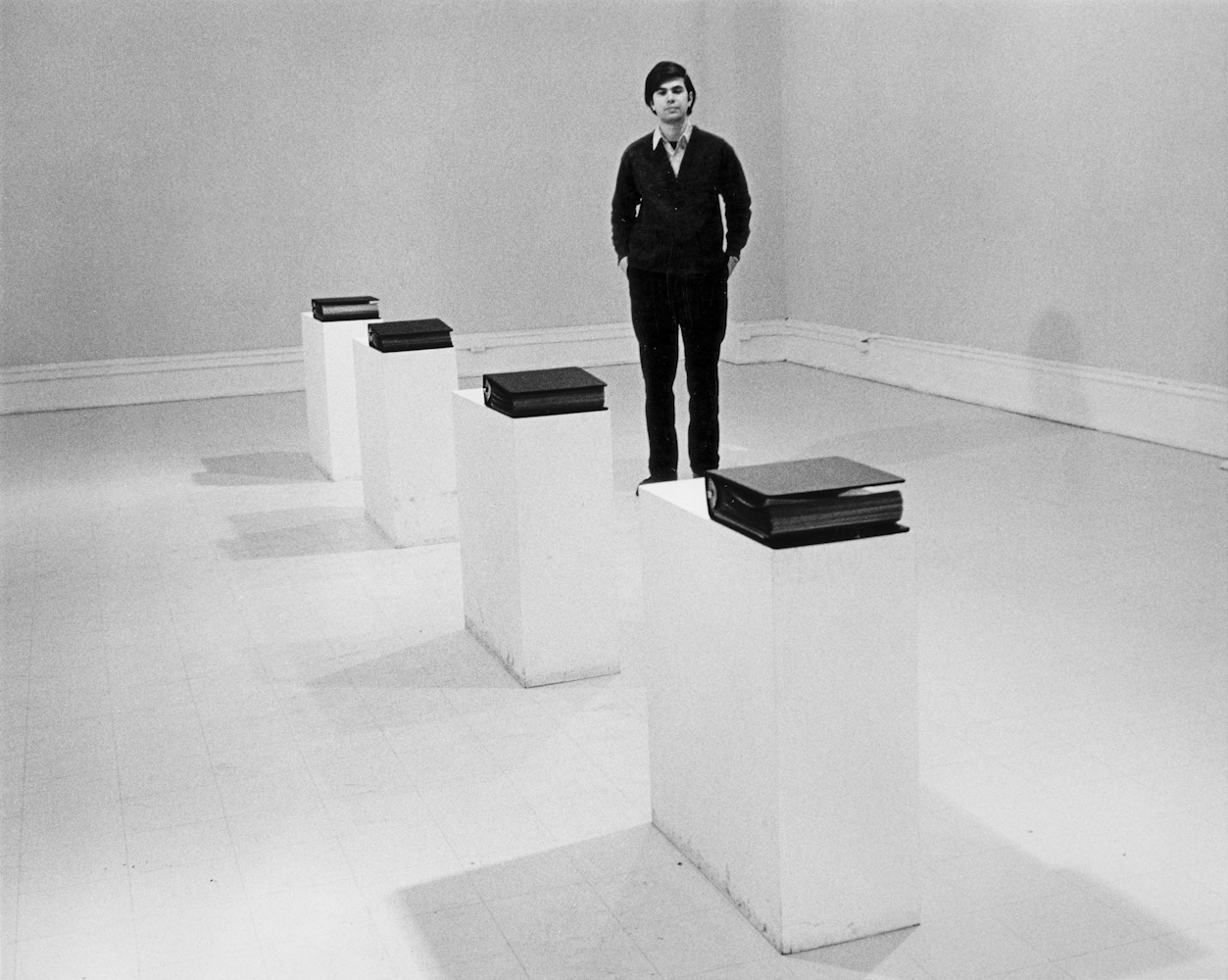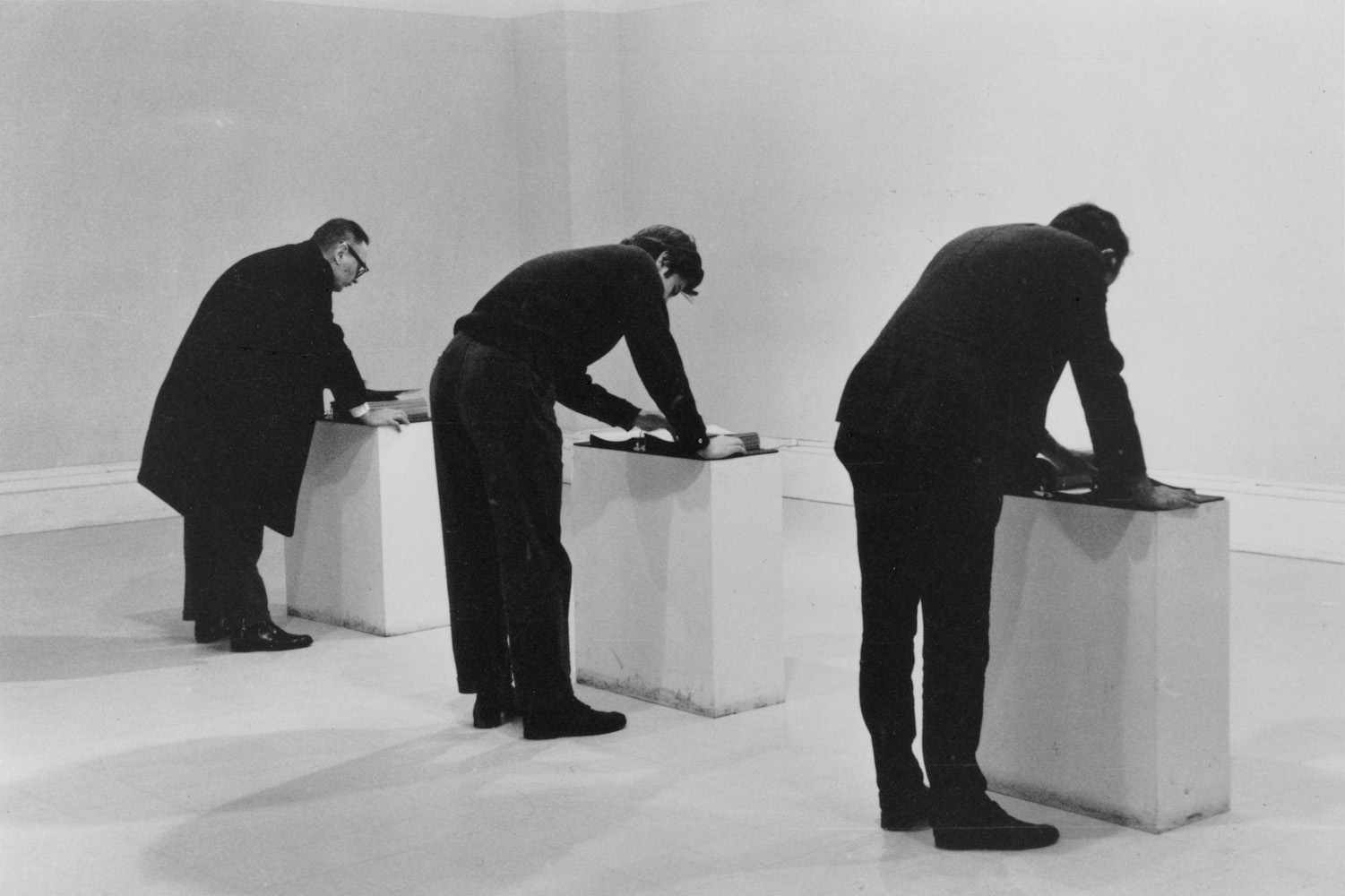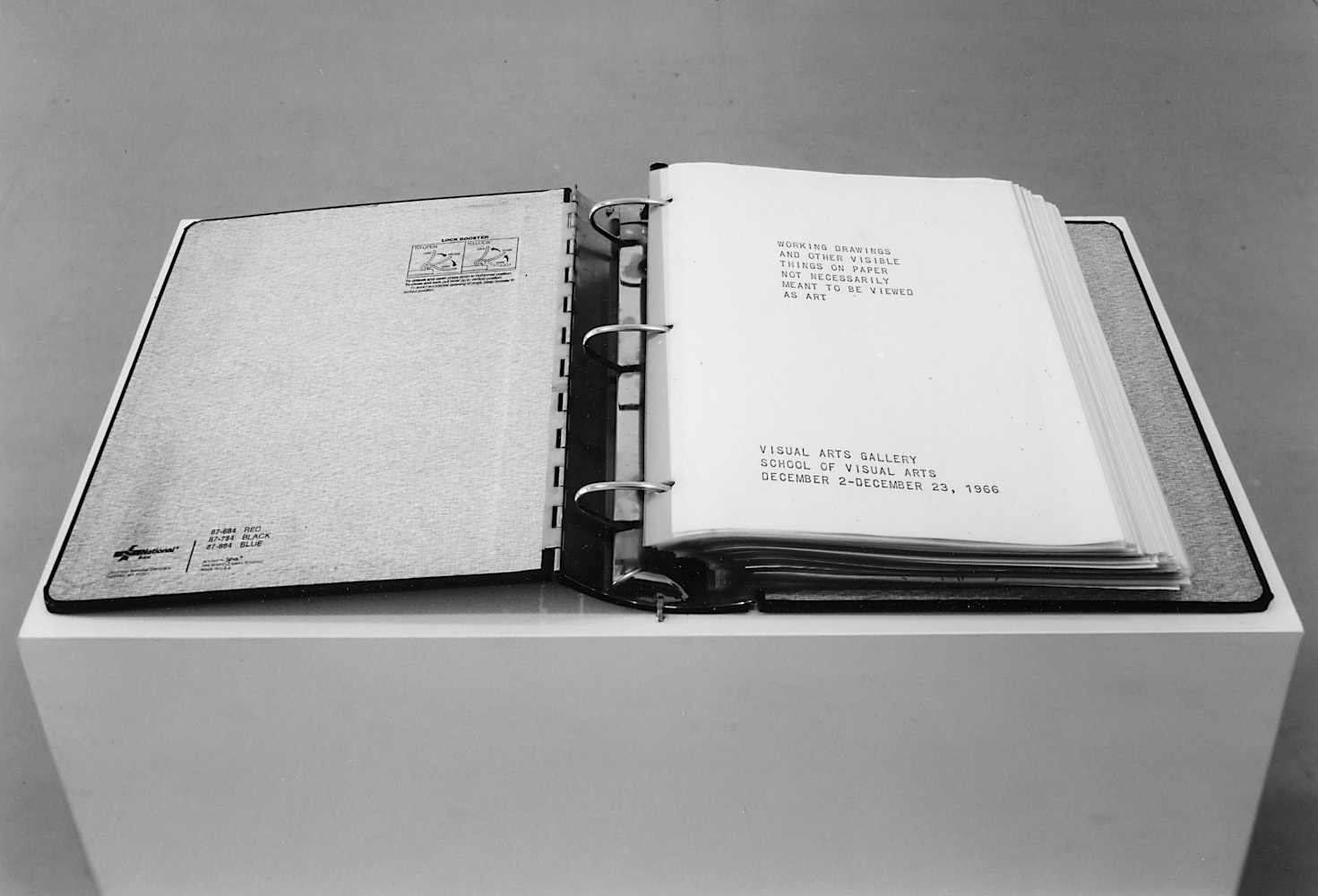Mel Bochner, Working Drawings and Other Visible Things on Paper Not Necessarily Meant to be Viewed as Art, School of the Visual Arts, 1966
Mel Bochner, Working Drawings and Other Visible Things on Paper Not Necessarily Meant to be Viewed as Art, School of the Visual Arts, 1966



In 1966, Mel Bochner, then-young instructor at the School of Visual Arts in New York was asked to organize a “Christmas show on drawings,” to run from December 2–23, 1966. Bochner asked artist he liked (such as Donald Judd, Carl Andre, Dan Flavin, Sol LeWitt, Eva Hesse, Dan Graham, Jo Baer, Robert Moskowitz, Robert Smithson, Al Jensen, to name a few) for drawings that weren’t necessarily “work[s] of art.”1 The gallery, upon seeing the drawings, dismissed them, claiming “we don’t have enough money to frame them.” They had unlimited access to a large Xerox machine to photocopy the drawings, making them able to go about reducing and enlarging them to a uniform size. Presenting photocopies within a gallery setting was not yet common in 1966. To increase the sheet counts, Bochner sought other materials.2 He compiled the sheets into four bound books and mounted each on a white wooden pedestal.
Working Drawings exposed minimal art’s dependency on the readymade, and its “flirtation” with the mechanisms of mass production and consumption.3 Bochner’s installation reconfigures minimal shapes into “furniture,” metaphorically supporting an analysis of its own construction. Alluding to Marcel Duchamp, Bochner placed the books on pedestals, sites of art’s elevation and display, replacing the “cult value” or reproducibility of the Xerox.4 Working Drawings was not about the work, but rather it was a conceptual art of process located in the development of ideas.5 Gaps between language and things occur as thought-activity occurrence. In conceptual art, Sol LeWitt explains that ideas or concepts are the most important aspect of the work.6 LeWitt furthers states that when an artist uses a conceptual form of art, all the planning and decisions are made beforehand and the execution is only a perfunctory affair. Working Drawings opposed materialist processes, making selection and process based on material and financial aspirations — it was not planned or decided beforehand.7 Working Drawings was an “anti-form” model associated with Robert Morris (1968) who claimed that there was a disconnection between conception and realization; minimal work was hardly “irrational” but “reasonable,” and “well-built.”8 To remedy this problem, Morris argues for directly manipulating a given material by the artist and processes that occurred in time (such as “random piling, loose stacking, hanging”).9
Working Drawings exposed minimal art’s dependency on the readymade, and its “flirtation” with the mechanisms of mass production and consumption.3 Bochner’s installation reconfigures minimal shapes into “furniture,” metaphorically supporting an analysis of its own construction. Alluding to Marcel Duchamp, Bochner placed the books on pedestals, sites of art’s elevation and display, replacing the “cult value” or reproducibility of the Xerox.4 Working Drawings was not about the work, but rather it was a conceptual art of process located in the development of ideas.5 Gaps between language and things occur as thought-activity occurrence. In conceptual art, Sol LeWitt explains that ideas or concepts are the most important aspect of the work.6 LeWitt furthers states that when an artist uses a conceptual form of art, all the planning and decisions are made beforehand and the execution is only a perfunctory affair. Working Drawings opposed materialist processes, making selection and process based on material and financial aspirations — it was not planned or decided beforehand.7 Working Drawings was an “anti-form” model associated with Robert Morris (1968) who claimed that there was a disconnection between conception and realization; minimal work was hardly “irrational” but “reasonable,” and “well-built.”8 To remedy this problem, Morris argues for directly manipulating a given material by the artist and processes that occurred in time (such as “random piling, loose stacking, hanging”).9
Anti-form became associated with artists across the entire spectrum of 1960s process work. Such artists embraced chance and other organic processes for creating minimal sculptures. They worked from the principle that form should derive from the inherent qualities of the chosen material. In such cases, artists had to relinquish control of their artwork’s final appearances. In this framework, exhibition is anti-form, and does not act as a traditional representation of physical works. Mel Bochner’s Working Drawings exhibition still occupied a space within SVA.
1 James Meyer, “Mel Bochner, Working Drawings And Other Visible Things On Paper Not Necessarily Meant To Be Viewed As Art, 1966,” in The Artist As Curator: An Anthology, ed. Elena Filipovic (Milan: Mousse Publishing, 2017), 35.
2 Pages from Scientific American, projects by other intellectual workers: mathematicians, biologists, engineers and architects, musicians and choreographer. Bochner arranged the drawings in alphabetical order. As a frontispiece he included a floor plan of the gallery with measurement and on the final page, he added a diagram of the Xerox machine. Ibid.
3 Ibid, 41.
4 Ibid.
5 Ibid.
6 Sol LeWitt, “Paragraphs on Conceptual Art,” in Sol LeWitt, ed. Alicia Legg (New York: Museum of Modern Art, 1978), 166.
7 Ibid.
8 James Meyer, 44.
9 Ibid.
1 James Meyer, “Mel Bochner, Working Drawings And Other Visible Things On Paper Not Necessarily Meant To Be Viewed As Art, 1966,” in The Artist As Curator: An Anthology, ed. Elena Filipovic (Milan: Mousse Publishing, 2017), 35.
2 Pages from Scientific American, projects by other intellectual workers: mathematicians, biologists, engineers and architects, musicians and choreographer. Bochner arranged the drawings in alphabetical order. As a frontispiece he included a floor plan of the gallery with measurement and on the final page, he added a diagram of the Xerox machine. Ibid.
3 Ibid, 41.
4 Ibid.
5 Ibid.
6 Sol LeWitt, “Paragraphs on Conceptual Art,” in Sol LeWitt, ed. Alicia Legg (New York: Museum of Modern Art, 1978), 166.
7 Ibid.
8 James Meyer, 44.
9 Ibid.